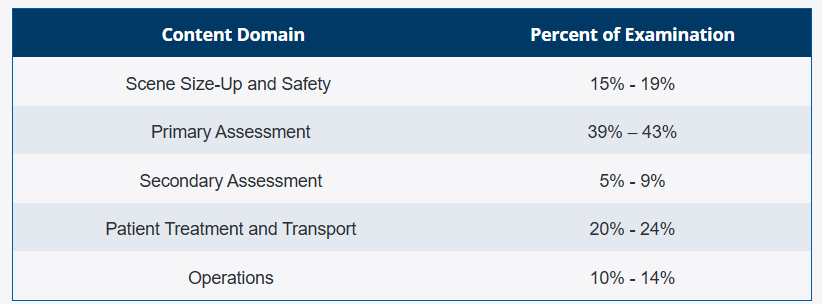Last Updated on July 5, 2025
FREE NREMT EMT Practice Test Questions and Answers Quiz 2025. Download the Free Official Study Guide with a printable PDF. EMT certification, or Emergency Medical Technician certification, signifies that an individual has completed the required training and passed the necessary exams to provide basic emergency medical care.
To enhance your preparation, consider taking an EMT practice test that covers a variety of scenarios you may encounter during the exam.
Serving the public as an Emergency Medical Technician (EMT) is among today’s most rewarding careers. The overwhelming majority of states in the U.S. require that you pass the National Registry of Emergency Medical Technicians (NREMT) exam to become certified and work as an EMT. Certification through the NREMT indicates that you have demonstrated entry-level competency as an EMT.
FREE EMT Practice Test 2025
The free EMT practice test available online is an excellent tool to gauge your knowledge and readiness.
The NREMT certification exam is a “pass/fail” test. Its purpose is not to identify who is the “best” but to identify who is “competent.” Your future patients don’t care what you score on your certification exam.
They care about receiving competent and compassionate care for themselves and those they care about. This Crash Course gives you the essential information you need to prepare for the NREMT certification exam.
Completing an EMT practice test can significantly boost your confidence leading up to the certification exam.
EMT Exam:
The NREMT exam presents a series of multiple-choice questions designed with one best answer. It’s essential to understand that this adaptive test adjusts its difficulty according to your responses. Answering a question correctly typically leads to a slightly more challenging question, whereas an incorrect answer prompts a more straightforward question.
Many candidates find that reviewing an EMT practice test helps them identify areas where they need further study.
| Test Name | NREMT Practice Test 2025 |
| Test purpose | Certification of EMT |
| Total Items | 70–120 questions |
| Question Type | Multiple Choice Question |
| Test mode | computerized adaptive test (CAT) |
| Time Limit | 2 hours |
| Test Retake | After 14 days |
| On-Screen Calculator | Yes |
| EMT result validity | 24 months |
| Application fee | $104 |
| Testing Authority | Pearson VUE |
The goal of the exam is to determine your level of competence across five major areas: Airway, Respiration & Ventilation; Cardiology & Resuscitation; Trauma; Medical & Obstetrics/Gynecology; and EMS Operations.
Your NREMT exam will likely have between 70 and 120 questions. You will have two hours to complete the test. Less than 1% of candidates are unable to complete the exam within the allotted time. Take the time to read every question carefully. All questions will be multiple-choice, and each question will have four answer choices. You need to choose the “best” answer for the question posed.
Utilizing an EMT practice test will help you familiarize yourself with the exam format and types of questions.
Cognitive and Psychomotor Exams
EMT certification also includes passing cognitive and psychomotor exams. The cognitive exam assesses your understanding of emergency care fundamentals through questions covering medical emergencies, cardiology, trauma, and other related topics. The psychomotor exam puts your hands-on abilities to the test—everything from patient assessment to managing cardiac arrest scenarios.
Incorporating an EMT practice test into your study routine can streamline your exam preparation process.
Exam Result/Scoring
Typically, you can retrieve your score from the NREMT website 24 hours after you complete the exam. If you fail the exam, the NREMT will provide some detailed information about your performance in each of the exam categories. Candidates must wait at least 14 days before retaking the test.
After your exam, consider taking another EMT practice test to assess your understanding of the material.
The score report will highlight your strengths and weaknesses across various content areas, including airway, respiration, and ventilation; cardiology and resuscitation; trauma; medical, obstetric, and gynecologic care; and other relevant areas. If you see “above passing,” it means you answered these questions correctly at a level beyond the minimum standard.
“Near passing” indicates that you were close to the threshold, while “below passing” signifies that you need considerable improvement in that area. Beginning your analysis here allows you to understand where your knowledge base stands and which areas will require more focus if a retake is necessary.
Remember, regular practice with an EMT practice test is key to mastering the content areas covered in the exam.
Updates: https://www.nremt.org/EMT/Certification

